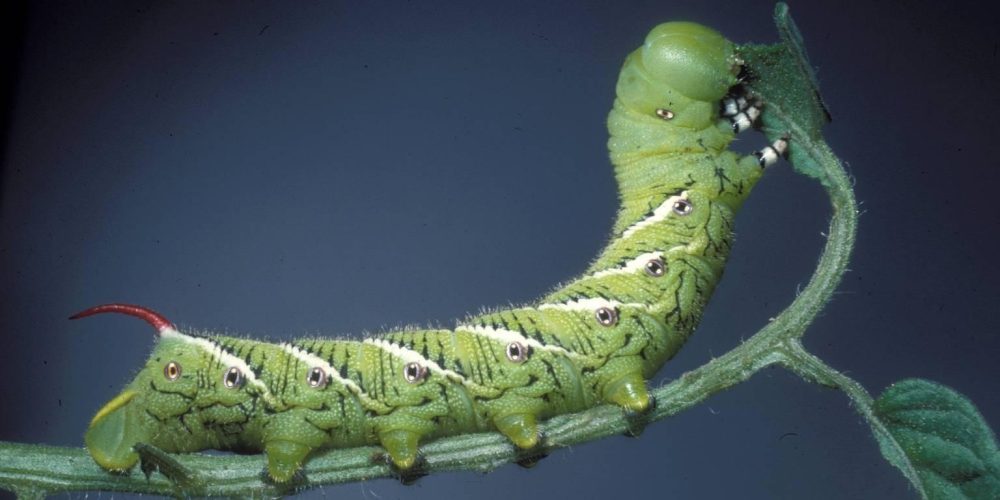Table of contents of the article
ToggleThe tobacco worm is a pest that causes significant damage to the leaves and fruits of pepper plants, affecting the quality of the crop. This article from the “WORLD OF PLANTS” website discusses ways to identify this tobacco worm pest on pepper plants and methods of effective control.
Causes of tobacco worm disease on pepper plants
- Disease name: Tobacco worm on pepper plant
- Scientific name: Manduca sexta
- Type of disease: insect
- Disease family: Sphingidae
The tobacco worm is found on all parts of the pepper plant, from the leaves to the stem, and may extend to the fruits. The tobacco worm is mixed with the green foliage due to its green color, as it cannot be distinguished quickly, so it is only seen during the day most of the time.
Symptoms of tobacco worm disease on pepper plants
The larvae feed by consuming the leaves of pepper plants. The leaves become distorted and often strip the entire leaves to the midrib, causing them to fall. They also attack the stems and fruits, causing holes in them. They also secrete black droppings that cover the plant.
Development cycle of tobacco worm disease on pepper plants
The life cycle of an adult tobacco worm is approximately 4 to 7 weeks. The tobacco worm feeds mainly on plant sap, which it digests easily and secretes a sugary juice. The sugary substances are an attractive source for black mold, which covers most of the plant leaf with black.
Suitable conditions for the spread of tobacco fungi on pepper plants
The tobacco worm needs a moderate temperature of about 25 degrees Celsius, and a relative humidity of approximately 60%, where its eggs will hatch.
Losses resulting from the spread of tobacco worm disease on pepper plants
The tobacco worm causes major economic damage to pepper crops, as the larvae feed on immature green fruits and stems, leaving wounds that attract other pathogens. They also reduce the area for photosynthesis and are a vector for viruses.
Development cycle of tobacco worm disease on pepper plants
- Use an organic pesticide that contains Bacillus thuringiensis, which is a bacterium that acts as an infectious poison for the tobacco worm and is considered safe for other plants and animals.
- Remove infected plants and dispose of them away from the field in case of severe infestation.
- The worms can be removed manually in the case of mild infestations.
Preventive measures for tobacco worm disease on pepper plants
- Till the soil in spring or fall.
- Continuously monitor the crop for early detection of infection.
- Good fertilization of the plant helps in resisting the disease.
- Installing a good irrigation and drainage system for the crop.
In conclusion, we would like to note that we, at the world of plants website, offer you all the necessary services in the world of plants, we provide all farmers and those interested in plants with three main services::-
- Artificial intelligence consulting service to help you identify diseases that affect plants and how to deal with them.
- Blog about plants, plant diseases and care of various crops ... You are currently browsing one of her articles right now.
- An application that provides agricultural consultations to clients, as well as a service for imaging diseases and knowing their treatment for free – Click to download the Android version from Google Play Store، Click to download the IOS version from the Apple App Store.




